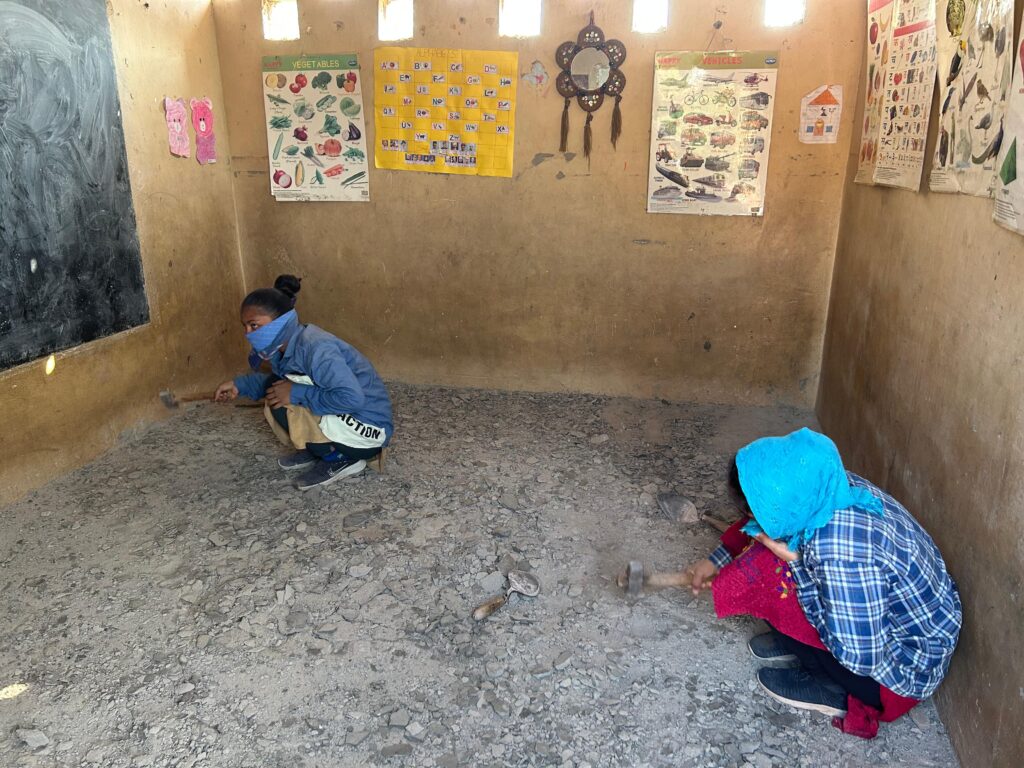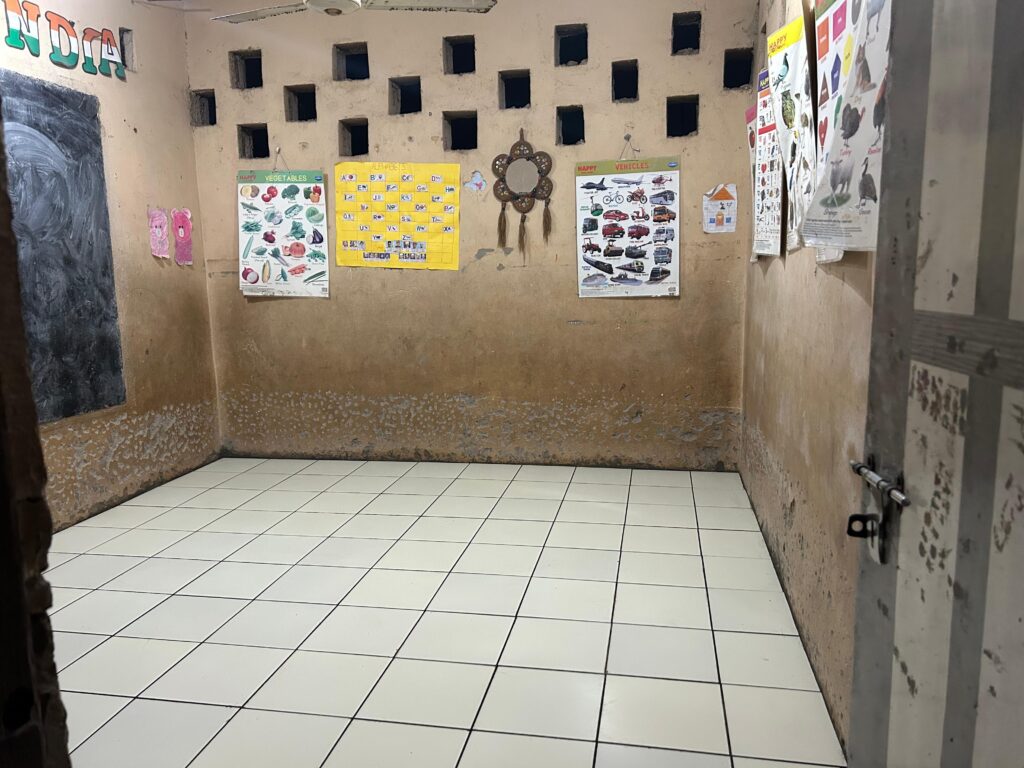I had the fortune of spending a few days at Karigar Shala. As the name suggests, it is a unique learning space in Bhuj for artisans and those to aspire to be artisans. It began as an educational and entrepreneurial incubator by Hunnarshala Foundation. The aim was to train school drop out boys, between the age of 16-18, in masonry and carpentry. Today, Karigar Shala is an independently registered organisation working to train young people in the craft of building.
Watch a vlog on Karigar Shala by Kala Pravas for a peak into the campus and its training program.
Beyond Concrete
Cement, bricks and iron rods. This summed up my knowledge of the construction world before I stepped inside Karigar Shala. On my first day here, the design of the campus immediately reminded me of Hunnarshala and Khamir. Anyone who has visited these campuses know that they are anything but typical buildings and rooms.
Every wall, every ceiling and every floor looks different. It is constructed using many different combination of construction material i.e., sand, clay, cement, stone, construction waste, wood, bamboo, etc. Immense diversity of material in one space, radiating creativity and originality.
Moreover, these spaces aptly reflect the creators’ vision of sustainability and the preservation of traditional construction knowledge. I am always excited to spend time at these campuses. They stand in stark contrast to the uninspiring concrete structures of urban landscapes that I am familiar with.

Sumanben’s Journey

Fifteen years ago, you would’ve found Sumanben in Manuka, a village 15 km from Bhuj, toiling away in agricultural fields. Sitting with me she recalled that she was earning a meagre Rs 60 doing backbreaking labour work. Through a neighbour of hers, she connected with Kiran Vaghela, who began to involve her in their work. Sumanben’s keen desire to learn paved a way for her transformation into a Karigar.
Sumanben’s expertise lies in roof construction, a category of work deemed extremely unconventional for women. Regardless, she rallied nine other women back then. Together they formed a collective of women Karigars skilled in roof construction.
Their initial projects were building ghaas chatts (grass roofs), a unique form of thatching technique. Traditional thatching involves the use of dry vegetation to assemble a roof. Sumanben and her team learned to weave dry straw into lengthy braids. They would then assemble onto metal/wooden frames, giving the old method an eclectic touch. Apart from the thatching technique, Sumanben is an expert in the art of mud-roll ceiling. In this method, mud and ghaas are rolled together into desired length and laid onto a frame to create a ceiling.


This skill has taken Sumanben and her team to work in Kolkata, Mumbai and Ahmedabad. But perhaps the most fulfilling project, Sumanben confided, was constructing the very roofs that sheltered the Karigar Shala and Hunnarshala campuses. A sense of pride filled her voice as she recounted how students and visitors alike are always introduced to her and informed about her work.
The Story Of Sunilbhai
Almost a decade ago, Sunilbhai first walked into Karigar Shala as a student. Today, he works there as a seasoned trainer. In our conversations he shared how he had lost interest in formal education after class 10. He sought a different path and found it at Karigar Shala. He arrived as an eager young boy, to learn and begin his journey as a Karigar. Through hard work and dedication, he honed his skills in the craft of building.
He has mastered masonry and carpentry. His expertise, particularly in tile installation, has garnered him a loyal clientele in Gujarat and beyond. Having built a thriving independent career as a craftsperson, he now spends his time at his alma mater. He trains and mentors the new generation of young boys, inspiring them to reach their full potential.
In a first, Sunilbhai trained 12 unskilled women in the basics of floor construction and tile fitting. In collaboration with Sakhi Sangini, Karigar Shala designed a comprehensive 12-day training program. Under Sunilbhai’s guidance, the women transformed the kutcha floor of a migrant community’s anganwadi into a sleek tile-fitted room.


Experiential Learning
The immensely nurturing environment coupled with the dedication of the artisans is what makes Karigar Shala state of the art. In Sumanben and Sunilbhai I found exemplary examples of courage, ambition and zeal. They have not only crafted (pun intended) an identity for themselves, but also created uniquely successful careers unlike those in the mainstream.
Through this experience I gained a deeper appreciation for experiential learning. As I spent more time oberserving the activities at Karigarshala, I found myself thinking about the importance and impact of experiential learning. I also felt that I missed out on such learning. The normative design of the society leaves very little room for experiential learning for children and young people.
Or at least that is how it was when I was growing up. The only kind of practical learning I did was after grade 8, in annual science fairs. This limited my potential to develop skills other than comprehension. This may be a significant reason why children lose interest in formal classrooms, which explains young people dropping out of formal education system.
Childhood is a time filled with possibilities, creativity and curiosity. At such a crucial stage, academic learning ought to be balanced with experiential learning for a child’s wholistic growth. Karigar Shala is doing just that by nurturing the curiosity of young boys. It is also ensured that the students receive the necessary academic education and skills for a complete learning experience.



0 Comments